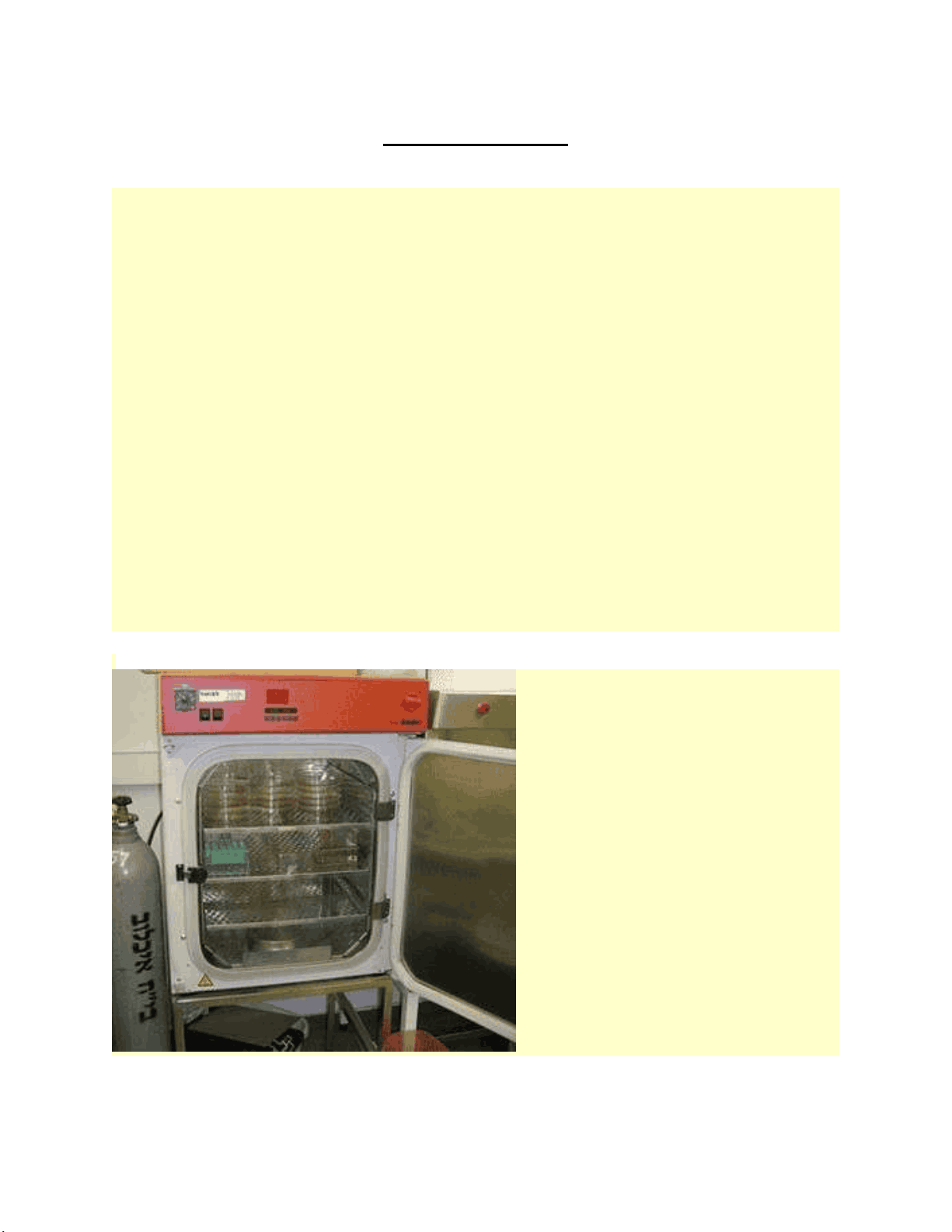
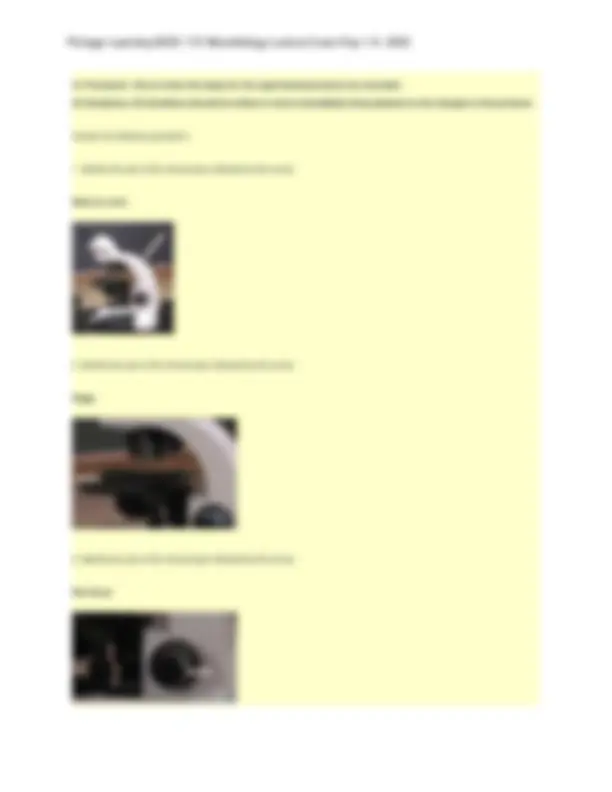
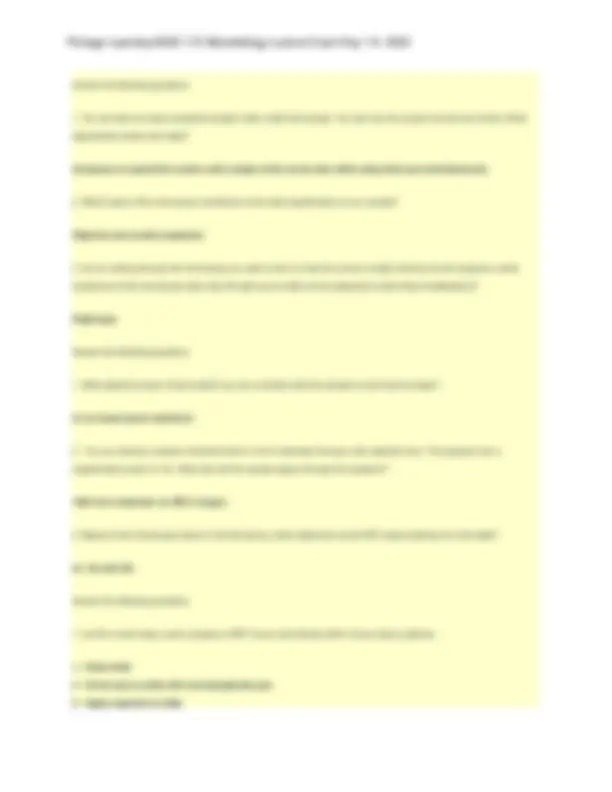
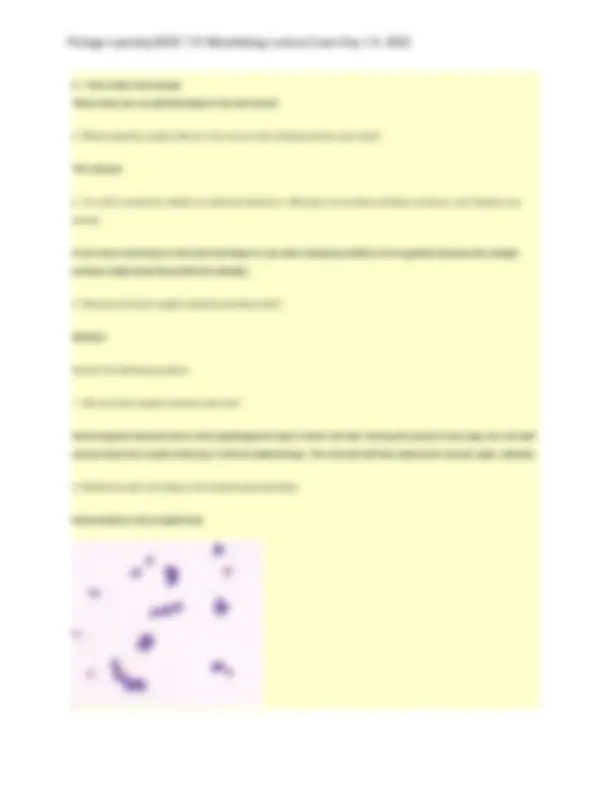
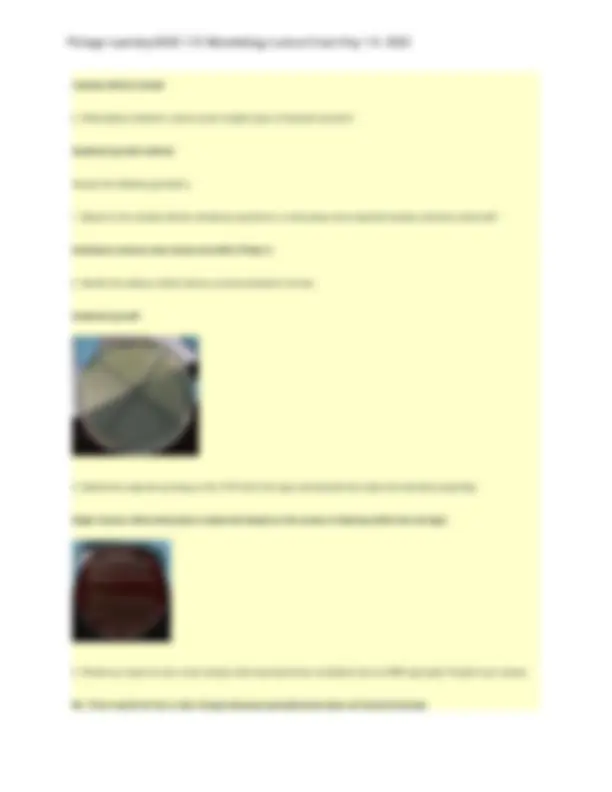
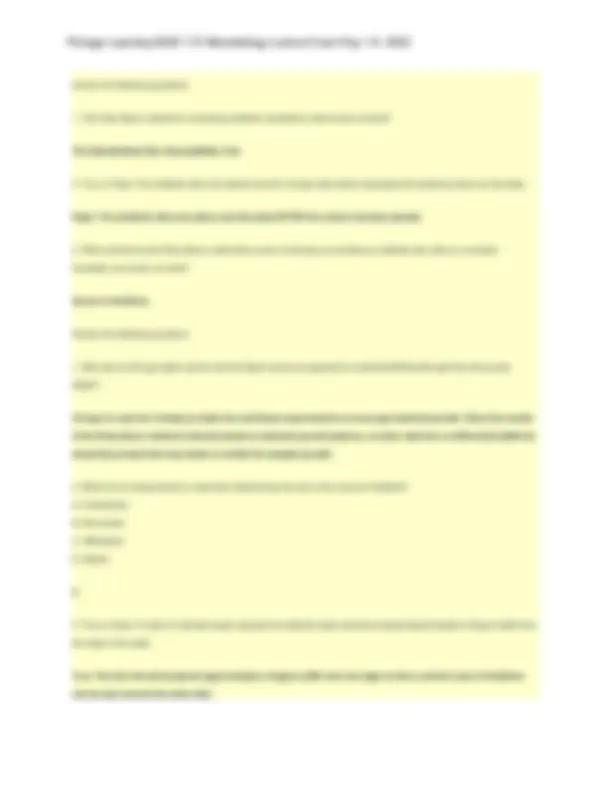
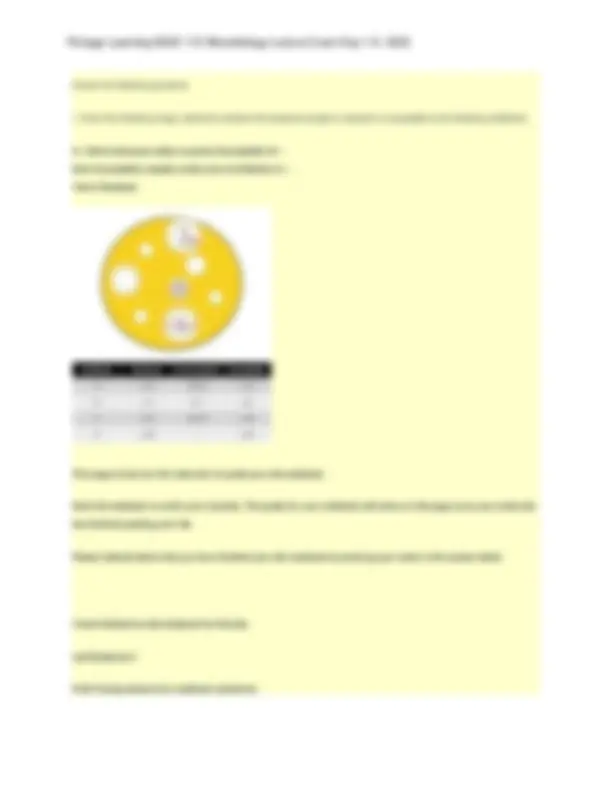
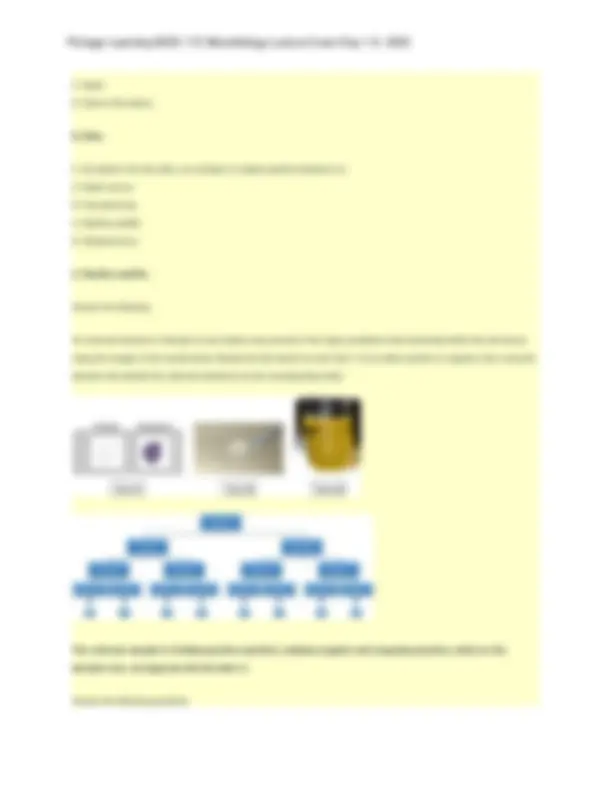
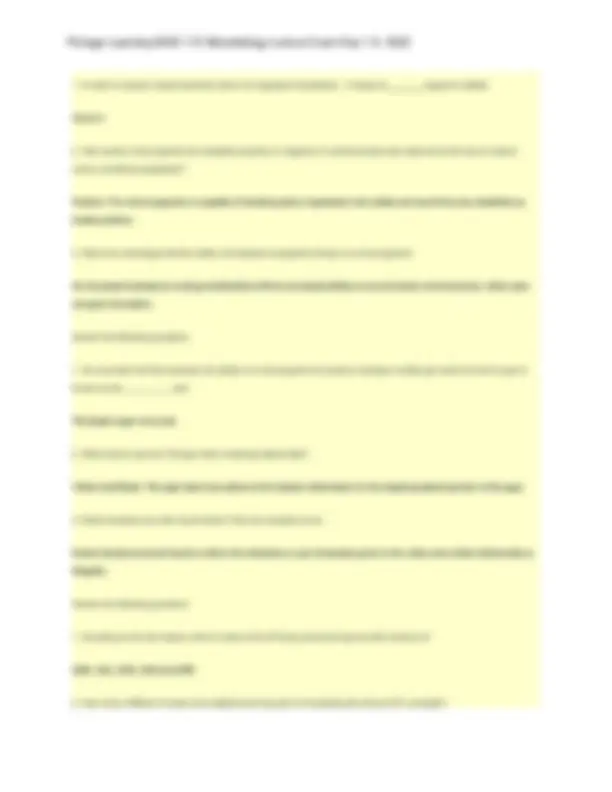
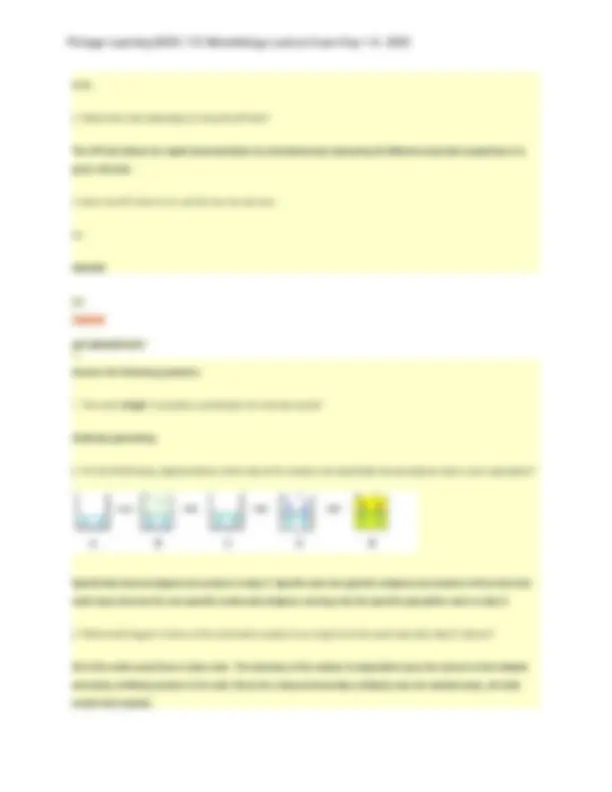



Study with the several resources on Docsity

Earn points by helping other students or get them with a premium plan


Prepare for your exams
Study with the several resources on Docsity

Earn points to download
Earn points by helping other students or get them with a premium plan
Community
Ask the community for help and clear up your study doubts
Discover the best universities in your country according to Docsity users
Free resources
Download our free guides on studying techniques, anxiety management strategies, and thesis advice from Docsity tutors
Portage learning biod 172 microbiology lecture exam Portage learning biod 172 microbiology lecture exam Portage learning biod 172 microbiology lecture exam
Typology: Exams
1 / 18

This page cannot be seen from the preview
Don't miss anything!











heat, pressure, and steam
125°C
Hot steam is the best choice as you can achieve a sterile environment in a matter of minutes whereas hot air will take several hours to achieve the same effect.
Fixed incubator
Answer the following questions.
37°C
4°C. This temperature slows bacterial growth and prolongs the life of the sample.
Latex, Nitrile, Thermal cold, Thermal heat
Objective, Procedure, Notes, Results and Deviations
Answer the following questions.
PS02 Microscopy
Answer the following questions
Compress or expand the oculars until a single circle can be seen while using both eyes simultaneously.
Objective and oculars (eyepiece)
Diaphragm
Answer the following questions
4x (or lowest power objective)
1200 mm in diameter (or 400x’s larger)
4x, 10x and 40x
Answer the following questions.
1 – Clean slide 2 – Circle area on slide with wax/hydrophobic pen 3 – Apply organism to slide
*4 – View under microscope Note: there are no optional steps in the wet mount.
70% ethanol
A wet mount technique is the best technique to use when studying motility of an organism because the sample remains viable (heat fixing kills the sample).
Safranin
Answer the following questions.
Gram-negative bacteria have a thin peptidoglycan layer in their cell wall. During the alcohol rinse step, the cell wall cannot retain the crystal violet dye. It will be washed away. The cell wall will then absorb the counter stain, safranin.
Gram-positive; Cocci (spherical)
TSAYE (Tryptic soy agar yeast extract)
EMB (Eosin Methylene Blue)
Answer the following questions.
Gram-negative bacteria
C
3.What pathogen is best identified using a SMAC agar?
E coli O157:H7. SMAC agar specifically differentiates between non-pathogenic E coli and the pathogenic E coli strain O157:H7.
4-phase dilution streak
Quadrant growth method
Answer the following questions.
Individual colonies were observed within Phase 3.
Quadrant growth
Staph Aureus; Beta hemolysis is observed based on the zones of clearing within the red agar.
No. There would not be a color change because pseudomonas does not ferment lactose.
Answer the following questions
A—24mm (because radius is given) Susceptible B— 9mm Susceptible, despite small zone of inhibition.C— 14mm Resistant
This page is here for the instructor to grade your lab notebook.
Each lab notebook is worth up to 5 points. The grade for your notebook will show on this page once your instructor has finished grading your lab.
Please indicate below that you have finished your lab notebook by entering your name in the answer blank.
I have finished my lab notebook for this lab:
Lab Notebook 5
PL05 Testing bacteria for antibiotic sensitivity
Objective: To determine the threshold of antibiotic sensitivity across bacterial strains using the Kirby-Bauer method. (Aka Standardized Disc Susceptibility Test)
Procedure:
**1. Streak bacteria A across an LB agar plate for confluent growth using a sterile L-spreader
Results:
**- List diameter of zone of inhibition for each disc
Recorded measurements (optional) Antibiotic Measurements (mm) Vancomycin 30 Clindamycin 16 Oxacillin 17 Tobramycin 22 Erythromycin 24 Penicillin 36 Gentamicin 10 Cefazolin 19
Answer the following questions
True
Gonorrhea
C. Alpha D. None of the above.
B. Beta.
C. Bacillus subtilis
Answer the following.
An unknown bacterium (Sample A) was tested using several of the rapid, qualitative tests described within this lab lecture. Using the images of the results below indicate the lab results for each test (1-3) as either positive or negative, then using the decision tree identify the unknown bacterium by the corresponding letter.
The unknown sample is: Oxidase-positive (aerobic), catalase negative and coagulase-positive, which on the decision tree, corresponds with the letter C.
Answer the following questions
Kovac’s
Positive. The microorganism is capable of breaking down tryptophan into indole and would thus be classified as indole positive.
An increased resistance to drugs/medications OR an increased ability to survive harsh environments—often seen via spore formation.
Answer the following questions
TSI (triple sugar iron) test.
Yellow and Black. The agar slant was yellow at the bottom while black on the sloped gradient portion of the agar.
Enteric bacteria around found in either the intestines or gut. Examples given in the video were either Salmonella or Shigella.
Answer the following questions
ADH, LDC, ODC, H2S and URE
Answer the following questions
proteins
Blocking prevents non-specific binding of the antibody—you only want the antibody to bind to its specific target.
Both the amount of protein loaded as well as the duration (time) of development is directly proportional to band intensity.
The arrow is pointing to the dye front.
Answer the following questions
Clumping
A. E coli B. Salmonella C. Staph D. Strep
C. Staph
The first quadrant served as the reagent only negative control—you want to ensure the reagent by itself does not clump but rather requires the presence of Staph.
Row A is negative for agglutination.
Quadrant 6 shows no signs of agglutination, which is only possible in the presence of antigens. Since Type O blood has no antigens, no clumping will occur during the test. Note: Quadrant 2 was stated to have clumping (albeit minimal) during the wet lab and is thus not an acceptable answer.